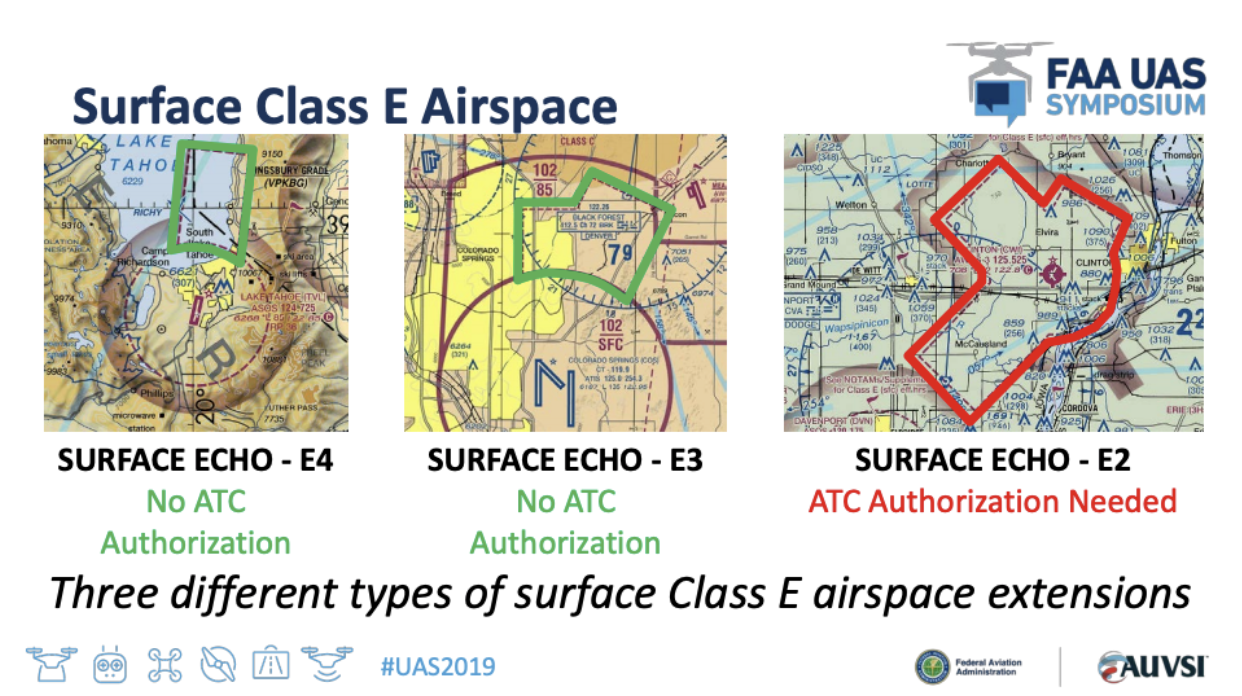This post addresses a commonly-asked question that we get from both sides of our user community – our recreational users on B4UFLY and our enterprise customers on Kittyhawk:
“I’m flight planning for operations near my small local airport. Kittyhawk and B4UFLY don’t show any restrictions, but I’m still not sure if I can fly near the airport. Can I fly there? Can I use LAANC there?”
The short answer to this question is that yes, you may be able to operate near a small airport in this situation if you are in uncontrolled airspace, you follow safety guidelines for operating near an airport (see 5.8.1), and you launch and land from a legal spot. In uncontrolled airspace, LAANC is not necessary, so it will not be available.
What is controlled airspace and how do I tell if I’m in it?
The reason this question is important is that in order to operate UAS in controlled airspace, both commercial and recreational UAS operators need prior authorization to operate. (I.e. You need permission before you begin your operation in controlled airspace). Controlled airspace is clearly labeled in the Kittyhawk and B4UFLY apps for advisory purposes, but it is always helpful to know as much as possible about the airspace you’re operating in.
Airspace in the United States is divided into multiple classes. Class A, B, C, D, and E airspace are considered “controlled”, while Class G is considered “uncontrolled”. Class A is largely irrelevant for hobbyist or commercial drone operations, as it starts at 18,000 feet. Class B, C, and D airspace surrounds airports with operational control towers in varying degrees of busy and/or complex airspace. An official FAA explainer on airspace can be found here, and a deep dive into aeronautical charts and airspace can be found here.
For UAS operations, Classes B, C, D, and some types of Class E (Class E2) are considered controlled airspace and thus require prior authorization. The easiest way to get this authorization is by using LAANC. The DroneZone could also be used to receive authorization, but since it is a much longer and more complicated process, it is recommended to use LAANC wherever it is available. A list of LAANC-enabled airports is published and updated by the FAA, with 537 air traffic facilities and 726 airports participating as of September 2020. This includes 133 with part-time tower operations. When a tower closes, formerly controlled airspace often becomes uncontrolled Class G or E airspace.
Class E Airspace and LAANC
A big point of confusion comes from the fact that there are multiple types of Class E airspace, only one of which (Class E2) requires authorization in order to operate there. Part 107.41 makes clear that no person may operate a small UAS “within the lateral boundaries of the surface area of Class E airspace designated for an airport unless that person has prior authorization from ATC.” This somewhat complicated language refers specifically to Class E2 airspace, which generally means a Class E airport (with controlled airspace that extends to the surface), and not extensions to other classes of airspace.
The remaining types of Class E airspace are still considered controlled airspace, but do not require prior authorization in order to operate (since the controlled airspace starts at 700 ft. AGL) – so you don’t need a LAANC authorization there. One of the best official explanations of this area of confusion is available through the FAA, who did a webinar on this very topic in June 2019.

Andrew Elefant
Andrew Elefant is the Director of Legal & Policy at Aloft, an enterprise drone software company. Andrew is a licensed attorney in California. He is also an experienced Private Pilot with Instrument and Multi-Engine ratings, as well as a certificated Remote Pilot.



